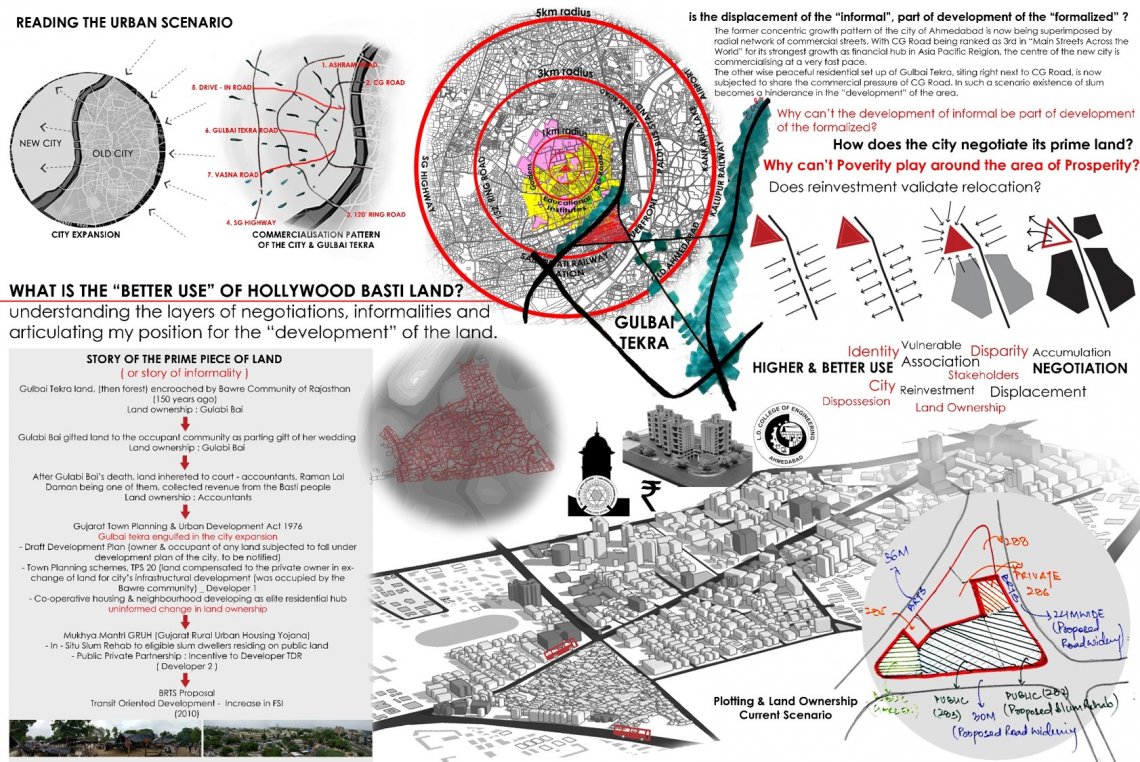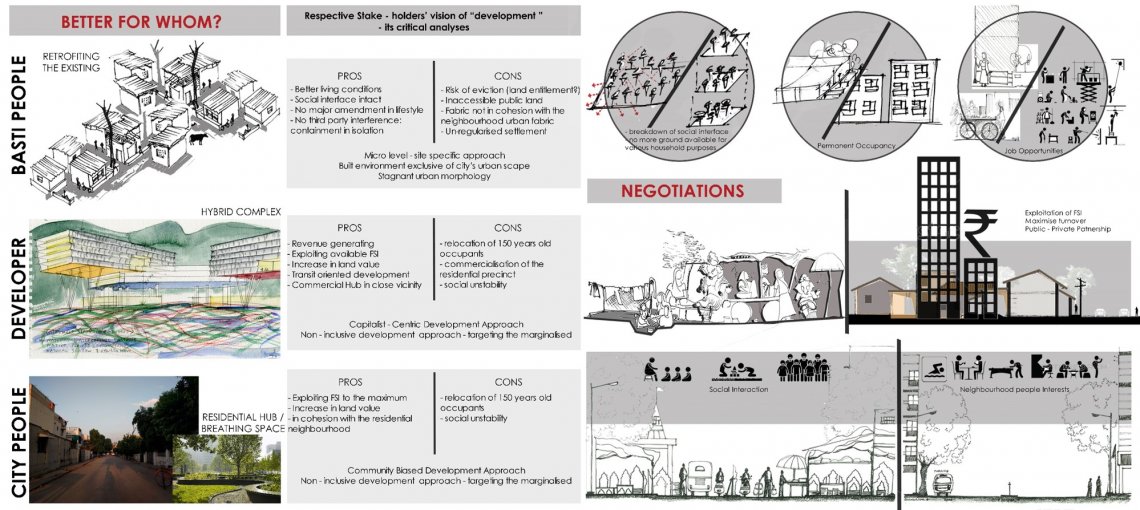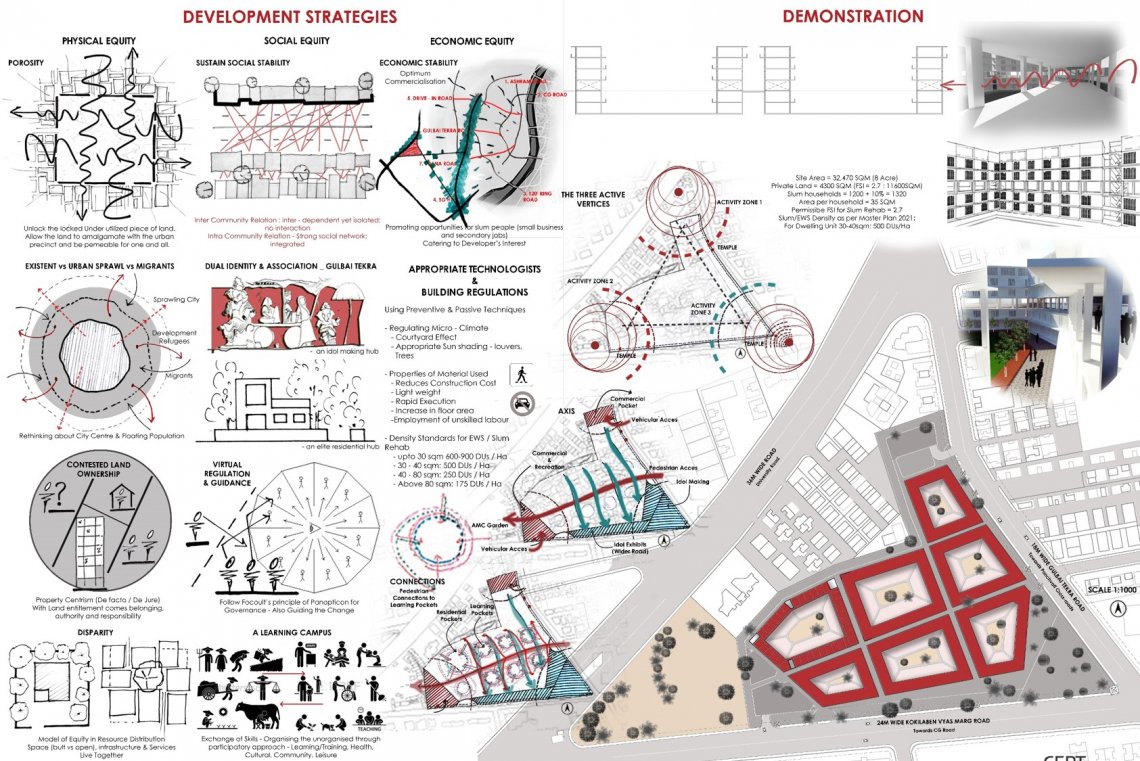Your browser is out-of-date!
For a richer surfing experience on our website, please update your browser. Update my browser now!
For a richer surfing experience on our website, please update your browser. Update my browser now!
Gulbai Tekra, the prime (disputed) land in the centre of the city, is urbanising at a fast rate. As a consequence of this process of urbanization, commercialisation is approaching at a fast pace towards the Hollywood Basti. And now, with the intervention of BRTS, the urge to consume maximum FSI further intensifies the question of the existence of Basti. The state and the capitalists seem to have a preconceived image of development of the entire stretch of Gulbai Tekra Road. The relocation of the 150 years old, former occupants of the place, the basti people, is a presumed act of this vision. The Basti is looked upon as a mere encumbrance in the growth of the city. Earlier also, around 2000 people were relocated to Odhav for road widening. But this “development” was resisted. They came back and attuned themselves with the rest.
Is this gentrification? Does reinvestment validate relocation? The basti majorly contributes to the identity of the place. The entire region looks upon it for the beautiful idols shaped by the basti people. Also its strategic location makes it a pool of employment opportunities for the needful. But the increase in population of the Basti on the frozen piece of land has led to extreme congestion and unhygienic living conditions.
Why can’t the development of "informal" be part of development of the "formalised"?
KEY ARGUMENT
Every city witnesses the issue of existence of the informal in the midst of formalised urban setup. The two co-exist until overpowered by the so called development. Using Gulbai Tekra as a lens, I argue that the present approach towards development is a - biased capitalist centric approach, and an act of ignorance of the poor.




